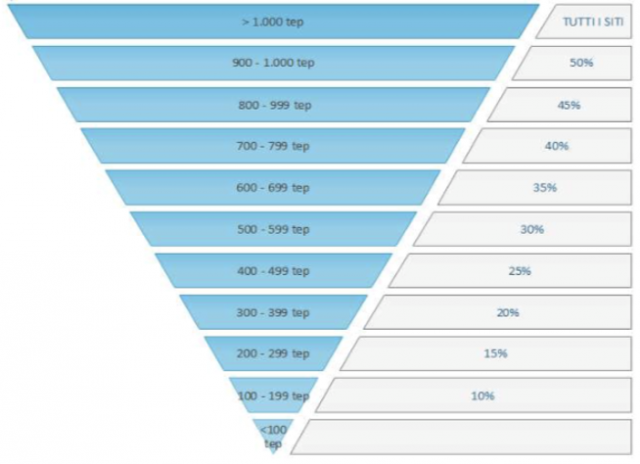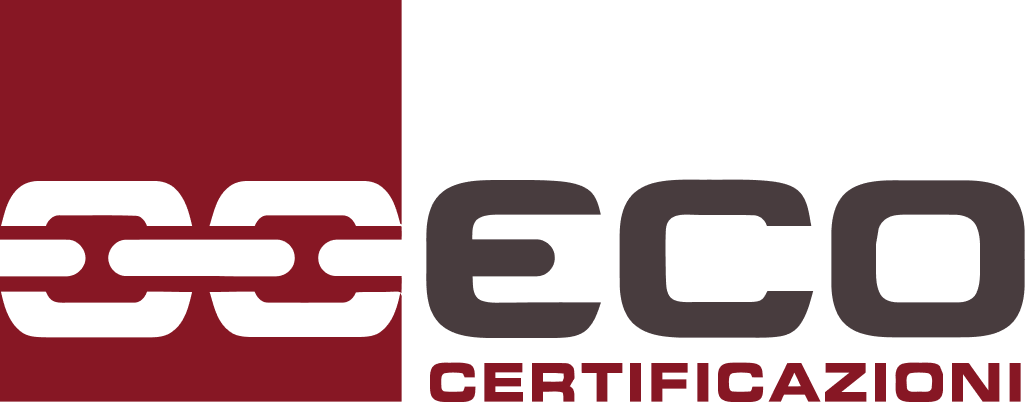Energy Diagnosis
With the Lgs. Decree 102 of 4 July 2014, Italy implemented the Directive 2012/27/EU on Energy Efficiency: the national objective is the reduction of 20 million Tonnes of Oil Equivalent (TOE) of primary energy consumption by the end of 2020. According to the Decree, organisations are obliged to conduct energy audits and are encouraged to adopt the Energy Management System according to regulation ISO 50001.
Subjects and obligations
With the Italian Legislative Decree n. 102 of 4 July 2014 (Official Journal General Series n.165 of 18 July 2014) Italy incorporated Directive 2012/27/EU on Energy Efficiency.
Art. 8 of the Italian Legislative Decree 102 specifies the subjects obliged to carry out energy audits by 5 December 2015 (and then every 4 years) on their own production sites:
- Large companies (paragraph 1);
- Energy-consuming companies (paragraph 3)
LARGE COMPANIES
According to MISE (Italian Ministry of Economic Development) Clarifications– November 2016, large companies are those organisations that meet the conditions outlined below:
- 250 employees regardless of the turnover and a turnover higher than 50 million euro and 43 million total Annual Budget.
Conditions verified during the two previous years.
ENERGY-CONSUMING COMPANIES
The new definition of energy-consuming company implies that not only absolute consumption of energy vectors be taken into account, but also the incidence of the cost of energy on the company’s overall turnover.
The provision establishes that companies with a total energy cost higher than 3% of the turnover be eligible for tax breaks.
Instead, the electric consumption intensity index is fixed at 2%, or the ratio between costs of electricity and turnover beyond which companies will be able to enjoy reductions in the system charges in electric bills (especially those for the Renewable Energy Sources). And the higher this ratio, the greater the reductions will be. The 2.4 GWh annual threshold of volumes consumed remains valid, below which the companies will not have rights to reductions.
Condition verified during the previous year.
Sites to be subjected to Audit (Art. 8 of Italian Lgs. Decree 102/2014)
Production site:
Production site is intended as a geographically defined location where a good is produced and/or a service is provided, and where the use of energy is under the control of the company.
Multi-site Companies:
The company, comprising n sites, all of which are under a single VAT number, or the group of companies that present a single consolidated balance sheet, or the group of associated or connected companies, has the possibility to carry out the Audit only on a significant group of their own sites.


The Energy Audit
The Energy Diagnosis is a systematic survey of the uses of the energy on the site, in the building or of the system being analysed, with the objective to define, in terms of the energy flows, the opportunities to reduce energy costs through management, installation, and structural interventions.
It is a tool for analysing the framework of a business’s energy management (industrial, service, primary and tertiary) and represents a systematic assessment of how energy is being used from the point of acquisition to the end use. ENEA (Italian agency for new technologies, energy, and sustainable economic development) has deemed it useful to establish an operational procedure relative to the Energy Audit that makes it possible:
- to uniform the management and entering of data by operators;
- to guarantee conformity to Annex 2 of the Italian Lgs. Decree 102/2014 (prescription that results as being fulfilled if the audit conforms to the minimum criteria contained in the UNI CEI EN 16247 technical standards, parts 1 to 4);
- to create a more organic reception and processing of the data by ENEA.
Subjects exempt from audit obligations
Those exempt from the obligation of conducting the energy audits every four years but not from sending it to ENEA (Italian agency for new technologies, energy, and sustainable economic development) are the companies with EMAS, ISO 50001 or EN ISO 14001 voluntary management systems, including an energy audit in conformity with the requirements of Annex 2 of the Italian Legislative Decree 102/2014.
The Energy Audit Report
The report must contain the following paragraphs:
- Note on who drafted the energy audit
- Company information
- Production site information
- Period of reference of the audit
- Energy consumption
- Raw materials
- Production process
- Products
- Energy reference indicators
- Information on the data collection methods
- Description of the implementation of the monitoring strategy.
- Energy models
- Identification of potential interventions
- Measurement plans to be implemented
- Summary of interventions identified
Deadlines
The next deadline for the presentation of the energy audit report will be 5 December 2019.
Sanctions
The companies obliged to conduct energy audits and fail to do so are subjected to being charged a pecuniary administrative sanction between 4,000 and 40,000 euro. When the audit is not conducted in conformity with the prescriptions outlined in Article 8, the company may be required to pay a pecuniary administrative sanction between 2,000 and 20,000 euro.
Paying of the sanction does not exempt the company from having to conduct the audit.
Main phases of the Service
ECO offers a service structured in phases designed to provide organisations:
- Definition of the objectives of the analysis with the Client
- Carrying out of an on-site survey which will include an in-depth analysis and monitoring campaign of the most intensive energy-consuming users
- Analysis of the data collected on site, an estimate of the distribution of consumptions among the various cost centres of the Client and preparation of an energy model of the system under analysis
- Proposal of interventions for the reduction of energy costs aimed at reducing wastes, malfunctioning, and the anomalies found;
- Presentation of the results.
-
Monitoring campaign
It is strongly advised that a campaign be conducted for at least 3 weeks on suitably identified electrical panels during a Kick Off Meeting, where the main users will be present for the purposes of fulfilling the minimum requirements as specified by ENEA. Monitoring tools to be installed on sites will be provided; the installation and removal of these tools will be the responsibility of the Client, with the support of our technicians. The network analysers will be installed near an electrical panel and will monitor the relative electrical charges.
-
Energy Audit
The Energy Audit technical proposal consists of 6 phases that will follow the Kick Off Meeting in the order presented below:
- Data Collection
- Data Processing
- On-site Survey
- Reconstruction of consumptions for each “Energy Cost Centre”
- Identification of Criticalities and Opportunities
- Drafting of Reports

